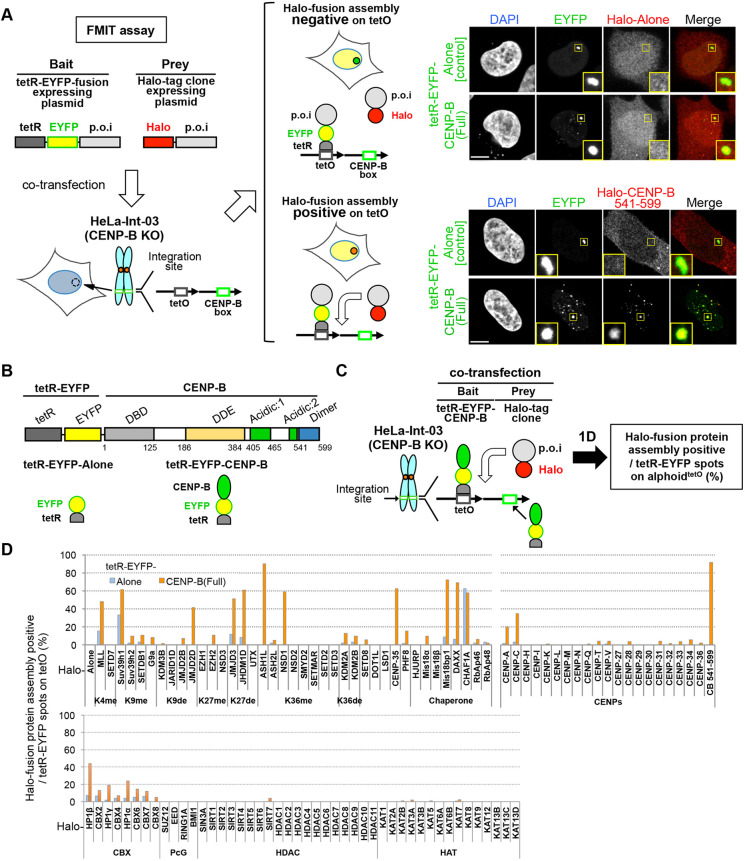Fig. 1.
Screening of proteins for CENP-B-dependent assembly on ectopic alphoidtetO DNA using a fluorescence microscopy-based interaction-trap (FMIT) assay. (A) Experimental design of the FMIT assay. Expression plasmids of a bait or prey are co-transfected into the CENP-B KO HeLa-Int-03 cell line, which has a synthetic alphoid repeat array containing tetO and CENP-B box sequences (alphoidtetO DNA) at an ectopic integration site. Colocalization of EYFP signal and the Halo tag-TMR ligand signal can be detected when an interaction exists between bait and prey and/or when the prey recognizes an alphoidtetO chromatin change induced by the bait. Negative and positive example images are shown in the upper right and lower right panels, respectively. In the positive case, tetR–EYFP–CENP-BFull recruits the Halo-tag fused to the CENP-B dimer domain (Halo–CENP-B 541–599). The yellow squares indicate the location of tetR–EYFP protein spots on the alphoidtetO DNA site (shown magnified in inset images). Scale bars: 5 µm. (B) Schematic structure of the bait (tetR–EYFP–CENP-B) and negative control (tetR–EYFP alone) used in this figure. DBD, DNA-binding domain; DDE, DDE-superfamily endonuclease domain; Acidic:1, acidic domain 1; Acidic:2, acidic domain 2; Dimer, dimerization domain. (C) Exploration of protein assembly on the ectopic alphoidtetO DNA integration site by CENP-B tethering. The bait and prey expression plasmids were co-transfected into the HeLa-Int-03 CENP-B KO cell line. The cells were fixed 1 d after transfection. More than 50 cells were analyzed to calculate the frequency of Halo positive EYFP-spots for each prey. The tetR–EYFP–CENP-B binds to not only tetO, but also to the CENP-B box. (D) CENP-B-independent (tetR–EYFP alone bait, blue bars) and CENP-B-dependent (tetR–EYFP–CENP-B bait, orange bars) assembly of Halo-tag fused histone modifiers, chaperones, CENPs and heterochromatin proteins was evaluated as the percentage of cells exhibiting colocalization of bait and prey on the ectopic alphoidtetO integration site. K4me, K9me, K27me and K36me indicate H3 lysine methyl transferases. K9de, K27de and K36de indicate H3 lysine demethylases. CBX, chromobox proteins; PcG, polycomb-group proteins; HDAC, histone deacetylases; HAT, histone acetyltransferases.

